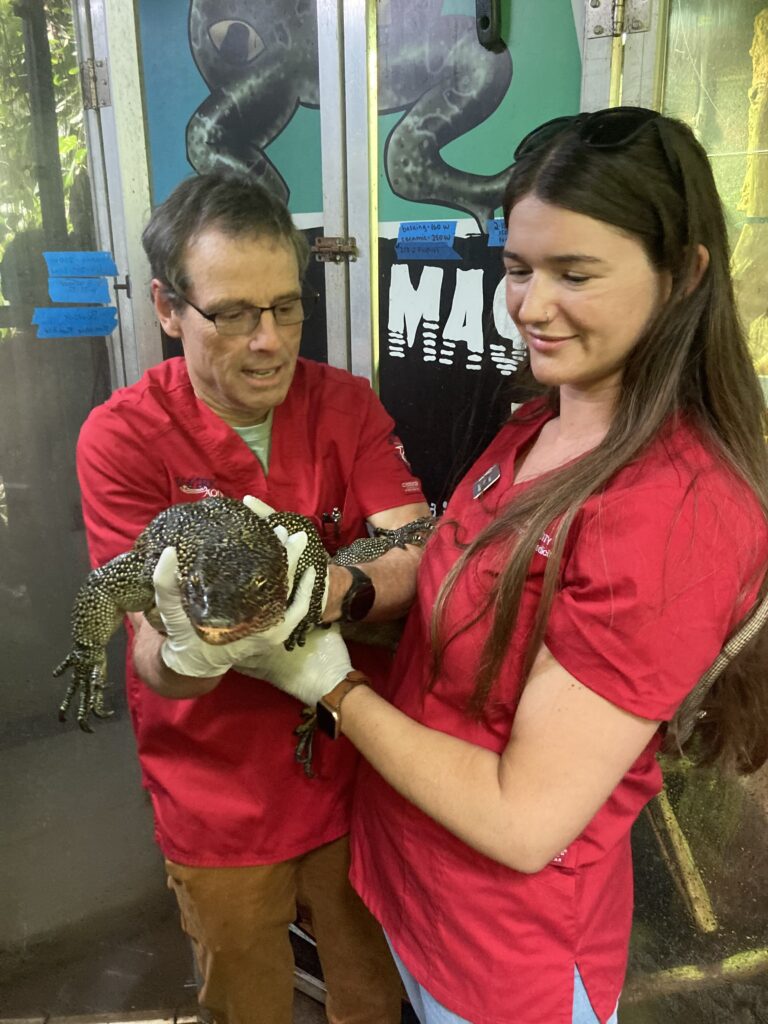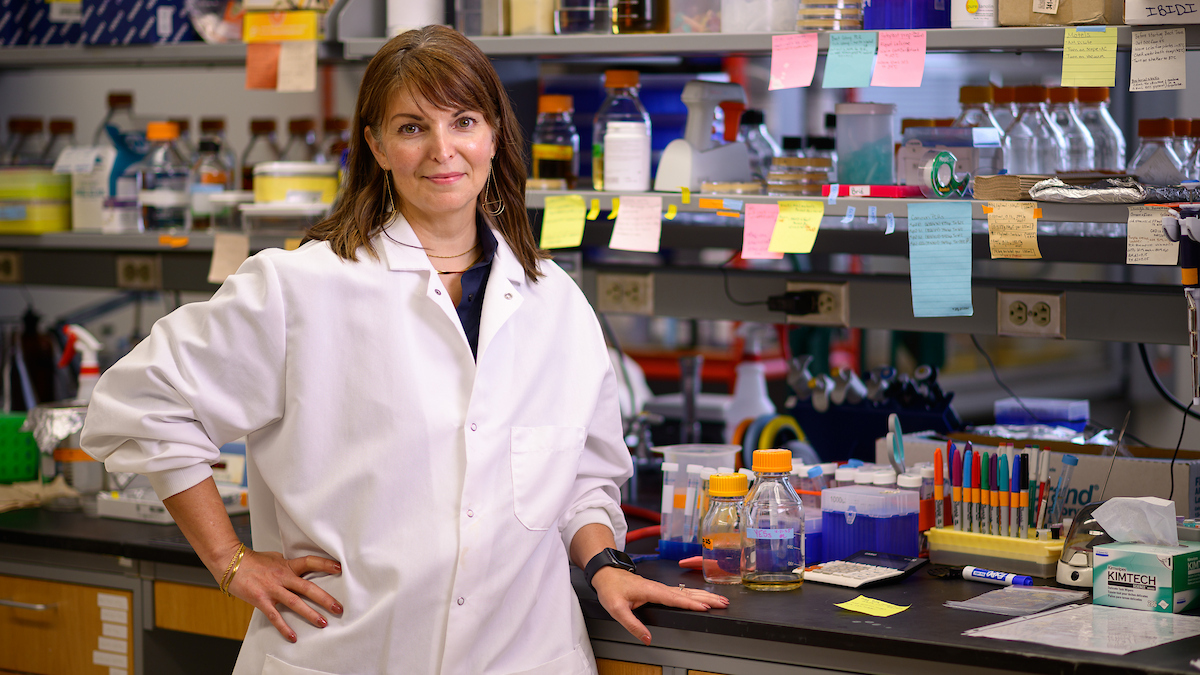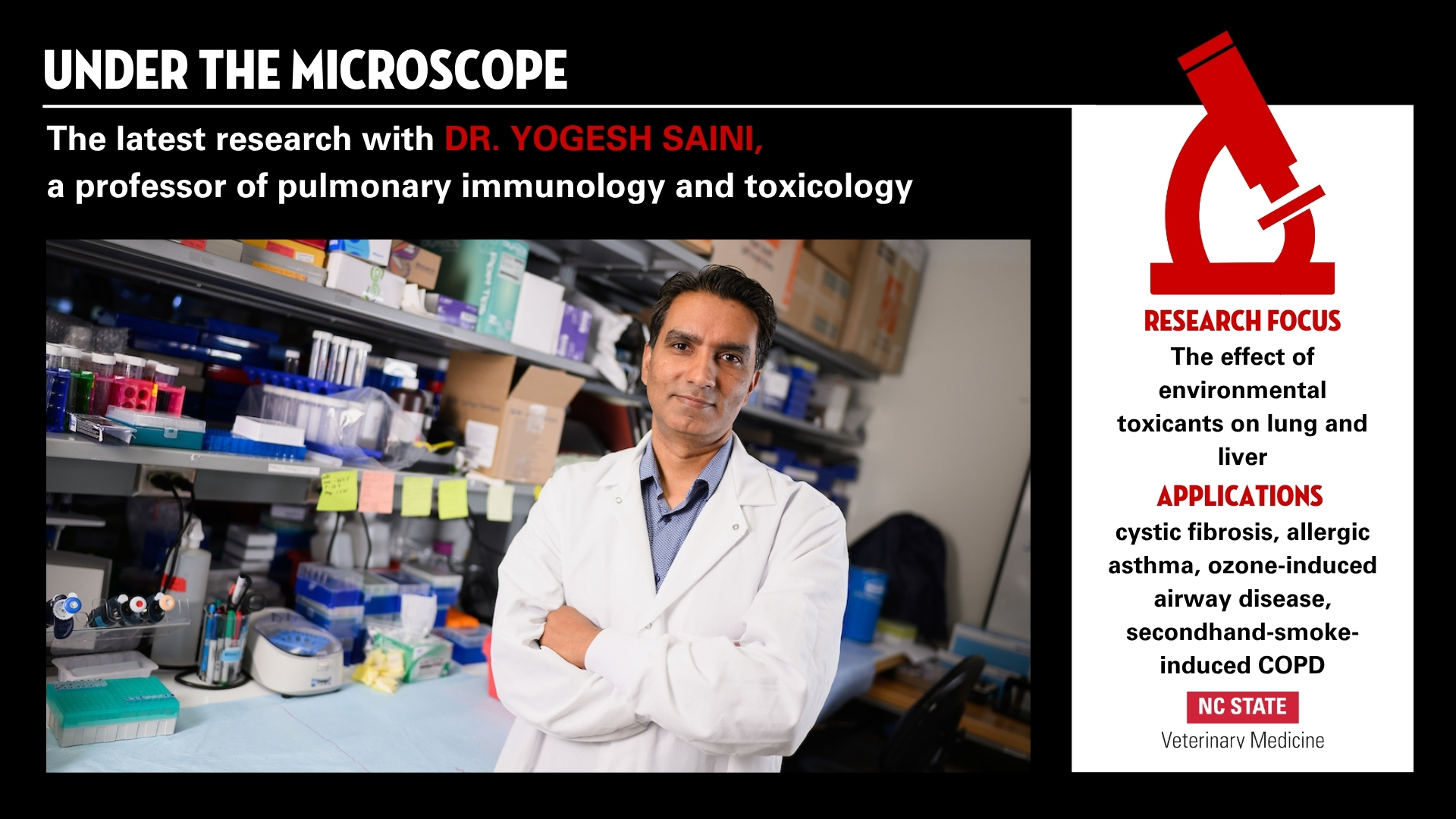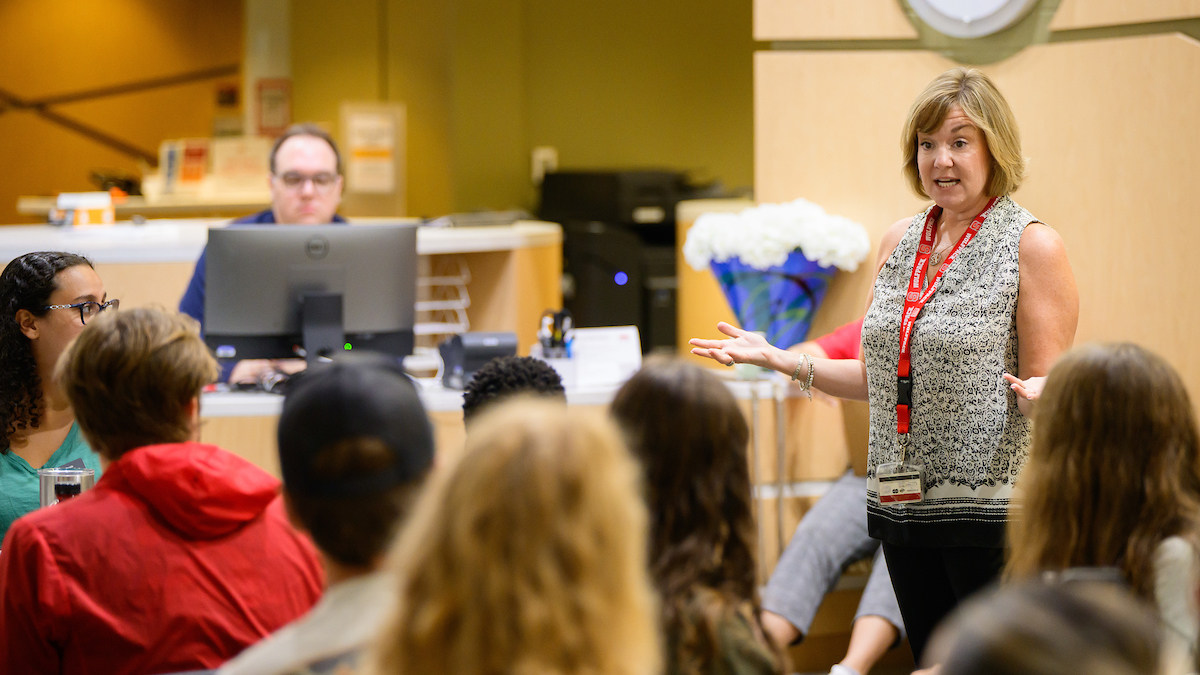Equine Colic, Coastal Microplastics and So Much More: Summer Research Program Sees Record Participation and New Projects
The College of Veterinary Medicine’s Veterinary Scholars Program offers DVM students with little lab experience a paid opportunity to pursue their research interests under faculty mentorship.
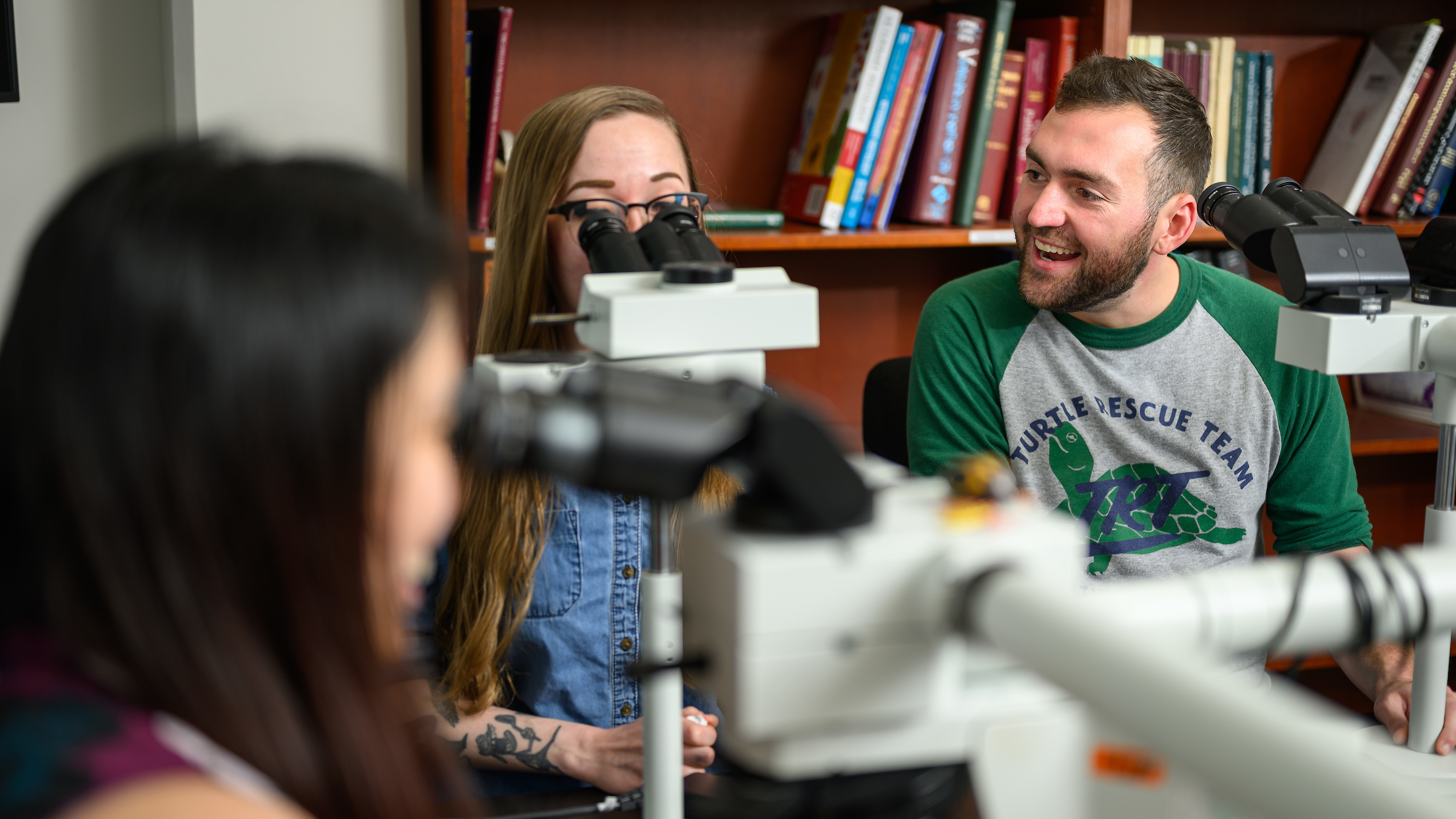
Ask most horse owners about equine colic, and they’re bound to have a story about paging a veterinarian to treat the condition or rushing their horse to a clinic for an emergency procedure.
The common and painful gastrointestinal condition can range from mild to fatal and have hundreds of causes or be idiopathic, with no known trigger at all. The myriad ways colic presents in horses make it even more complicated to diagnose and treat.
The chance to help solve this medical mystery drew rising second-year DVM student Peyton Jameson to the Veterinary Scholars Program, or VSP. The NC State College of Veterinary Medicine’s 10-week summer offering, which started in May, gives first- and second-year DVM students without prior research experience the opportunity to conduct a paid research project in a faculty mentor’s lab.
“It’s been interesting to comb through all the medical records and see all the ways different doctors will phrase things,” says Jameson, who is studying previous equine colic cases at the NC State Veterinary Hospital to improve how pathologists help diagnose them. “It’s also been really helpful to learn all this new vocabulary as I prepare to take pathology classes next year and declare a pathology focus.”
Both Jameson and his primary mentor, assistant pathology professor Dr. Panchan Sitthicharoenchai, are first-time VSP participants during a landmark year for the program.
Their cohort is the largest in the VSP’s nearly 25-year history at the NC State College of Veterinary Medicine, program co-director Dr. Jody Gookin says. Though the VSP typically draws between 30 and 40 student scholars, a record 57 students were admitted to conduct benchtop and clinical research this summer under the guidance of 42 faculty mentors and with the support of $370,500 in total stipends.
“I feel proud,” Gookin says of the increased interest. “I think it really speaks to the success of the college in building a culture that supports the training and mentorship of future clinician scientists.”

Though she and DVM/Ph.D. program director Dr. Sam Jones oversee the VSP’s operations, Gookin credits the summer offering’s success to the dedicated faculty advisers who make veterinary research appealing and approachable to students.
“The individual faculty, through their interactions with the students, become role models of clinician scientists for them and make veterinary science look cool, something to aspire to and a way to make a unique contribution to the profession,” she says.
This summer’s students are investigating a range of topics from A to Z — analgesia in food animals to zoological companion animal toxins. Their projects reach across the animal kingdom and aim to improve the health of species including horses, sheep, chickens, cats, dogs, bears, rodents, cattle, fish and oysters.
Interest in ruminant medicine research was so high this year that faculty members in the department are collectively mentoring their student participants, says Dr. Derek Foster, associate professor of ruminant medicine. Every ruminant-focused student will rotate through each mentor’s project and participate in a journal club to get a broader perspective on research in cows, sheep and goats.
Offered through the national Boehringer Ingelheim Veterinary Scholars Program, NC State’s program is recognized as one of the strongest in the nation, Gookin says. Students attend weekly seminars about the research process, learn how to secure research funding and present their findings, and have the chance to network with other veterinarians and researchers through visits to outside research facilities. Participation comes with a $6,500 stipend.
Students will attend the Veterinary Scholars Symposium in St. Paul, Minnesota, Aug. 8 through 10, to share their abstracts with other veterinary student researchers across the United States. They will also present the results of their projects at the College of Veterinary Medicine’s Research Forum on Aug. 28.
But before then, trainees like Jameson are hard at work collecting data, analyzing samples and learning the research process.
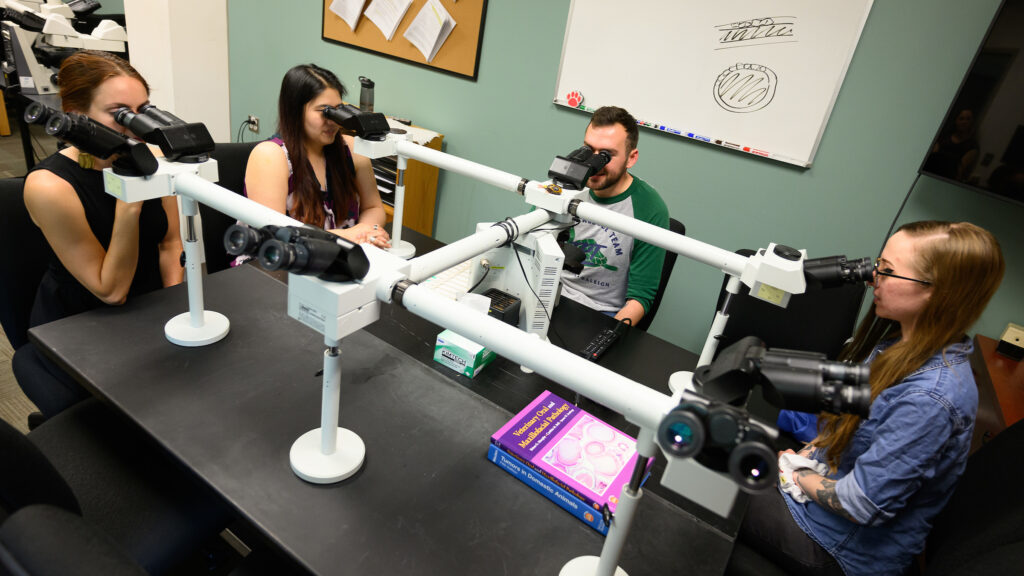
Jameson’s research team — Sitthicharoenchai, assistant pathology professor Dr. Elizabeth Rose and anatomic pathology resident Dr. Nora Gardner — is helping him analyze data and tissue samples from 241 colic cases seen at the veterinary hospital in recent years.
Their study is one of the first to evaluate equine colic’s causes on the East Coast.
“Colic is one of the more common conditions that we see in veterinary school in equine medicine,” Jameson says. “I’m hoping to come up with recommendations for testing that can help horse owners better understand what they’re dealing with and avoid worst-case scenarios.”
Sitthicharoenchai says she has seen Jameson grow as a researcher over the past few weeks, and she has enjoyed mentoring him and witnessing his progress.
“It’s really been apparent how Peyton’s critical and independent thinking skills have evolved from when he first joined the project,” adds Rose. “Probably the hardest part about being in research for the first time is getting your feet wet and being comfortable trying something new, and he’s crossed that hardest barrier.”
A symbiotic relationship
Faculty mentors gain as much from the VSP as the students they coach. The program provides them not just a “partner in the lab to move research forward,” as Gookin says, but time to get to know their students on a deeper level and guide them toward their career goals.
Dr. Greg Lewbart, a professor of aquatic, wildlife and zoological medicine, has coached trainees through the summer research program for 25 years. Dedicated and enthusiastic students like rising second-year Stephanie Hasapis, his mentee this session, make the job easy.
“I never did research in veterinary school — in the 1980s, there wasn’t anything like this,” he says. “The best part of my job is working with veterinary students. They’re very focused and motivated. My wife and I don’t have kids, so I love experiencing the wonder of veterinary medicine and research through my students’ eyes when they see things for the first time.”
This summer, Lewbart and Hasapis are measuring the amount of microplastics ingested by common fishes along the North Carolina coast between Cape Lookout and Morehead City. They hope to figure out which microplastics are entering the coastal waters and how they affect different fish species, from snappers to bluefish and Spanish mackerel.
Hasapis says she hopes to illustrate how human plastic usage is a comparative health issue: Discarded plastic disrupts the marine life food chain and then makes its way into human bodies when the fish are consumed.
Collaborating with Lewbart has been its own study in symbiosis, helping her discover a new passion for working with aquatic and invertebrate animals. She hopes to study zoological medicine so she can one day hold a faculty position like Lewbart’s and teach what she has discovered.
“I’ve always been drawn toward academia and research but was unsure where to fit that in with clinical sciences,” Hasapis says. “This research opportunity, and working with Dr. Lewbart, shows me that I can do everything I want to do in veterinary medicine after I graduate.”
